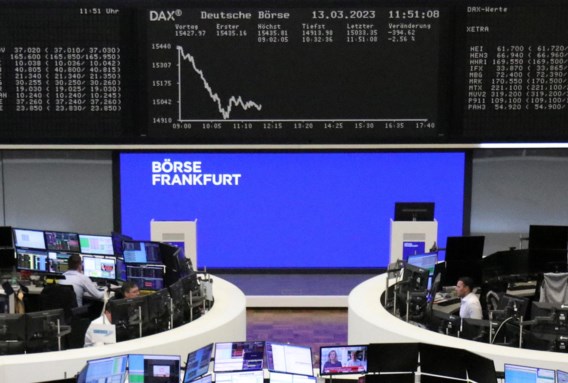Bank panics increase fear of risk, suddenly making market financing more expensive. As a result, it is expected that central banks will no longer have to aggressively raise interest rates. The short-term interest rate on two-year government bonds is down by a staggering half a percent. important shift.
The banking panic after the problems with a Silicon Valley bank had an unexpectedly important impact on central bankers’ policy. Until now, according to Peter Vanden Hout, chief economist at ING Bank, the market has largely ignored central bank policy, but that is now changing. There is more fear in the market again and as a result investors are calling for a higher risk premium on corporate bonds than safe government bonds. This means that it will be more expensive for companies to obtain financing from the market, which may help cool the economy. This, in turn, helps curb inflation.
Until a few days ago, it was believed that central bankers would have to forcefully raise interest rates to calm the economy and inflation. But that is no longer necessary. This has a particular effect on short-term interest rates on government papers. The Belgian two-year interest rate is down 0.51 percentage point, to 2.81 percent. The long-term interest rate on Belgian government bonds fell a little less sharply, but still by 0.29 percentage points.
Risk aversion takes its toll
This does not surprise Vanden Houte. So far I’ve seen that the economy can still be funded fairly easily via the markets, despite central banks raising interest rates. The market hardly demanded a risk premium on corporate bonds. This made it more difficult for central banks to slow down the economy and thus control inflation. Given the events surrounding SVB, you see that somewhat risk averse. Central bank policy is now also reflected in market financing. Central bankers may have to put less effort into raising their money prices and that’s why you’re mainly seeing lower short-term interest rates, Vanden Hout says.
For stock markets and banks, the picture is fundamentally different. Increased risk aversion is bad news for them. Bank stocks in particular are under a lot of pressure in the stock market. Due to the fall of US Silicon Valley Bank (SVB), investors are selling their bank stocks. Bel20, which had a really bad day on Friday for the same reason, has lost all profits since the beginning of the year. Bel20 lost another 2 to 3 percent today. With bank stocks, the loss is twice as large.
The fall of the US bank SVB shows how a sharp reversal of interest rate policy of central banks burdens certain institutions with problems. The fastest rise in interest rates has a twofold effect: bond portfolios become worth much less and some companies find it more difficult to raise money.
The first effect – the depreciation of bond portfolios – has to do with the fact that banks and other institutional investors have bought (government) bonds in recent years that have yielded almost no interest. These bonds are much less valuable today. New bonds are issued at a much higher interest rate. As a result, older, low-coupon bonds are priced at a significant discount to their issue price.
Accounting banks under scrutiny
Banks, among other things, sit on large bond portfolios and thus suffer large losses. Only those losses aren’t in the books, at least when it comes to held-to-maturity bonds. This is the big difference with the banking crisis in 2008. Then those losses had to be booked and the banks’ capital washed away, so that the savers suspected the banks and sometimes even removed their savings.
Due to change in accounting rules, the gap in bank accounts is now theoretical. The fact that things got worse at SVB was that the bank was finding it increasingly difficult to attract enough deposits to fund its activities. As a result, it had to partially reduce its bond portfolio. So-called theoretical losses have now become real losses. In SVB, it also turned out that the capital losses in the bond portfolio were greater than the bank’s equity. It also turned out that SVB hedged its balance sheet against interest rate shocks at a much lower rate than other banks.
And so now all the analysts are suddenly looking at the bank accounts with a magnifying glass. What is the size of the theoretical losses on investments and how much equity in return? This will be better than expected in Europe, but it is now clear to everyone that the aggressive interest rate policy of central banks has a big dark side. Institutions in the speculative corner of the market are the most affected, but ordinary banks also suffer theoretical losses. This worries investors. Bank stocks drop twice as much as stock markets. KBC, ABN Amro, ING and others fell 5 percent to 7 percent. There was also a strong correction on Friday. As a result, the Bel20 once again has a loss compared to the beginning of the year. Big turn.

“Total coffee specialist. Hardcore reader. Incurable music scholar. Web guru. Freelance troublemaker. Problem solver. Travel trailblazer.”






More Stories
European stock markets are expected to open lower.
Bosman transfers the company to the Finns.
Belgian businessman saves Flemish stores from collapsing fashion chain Scotch & Soda